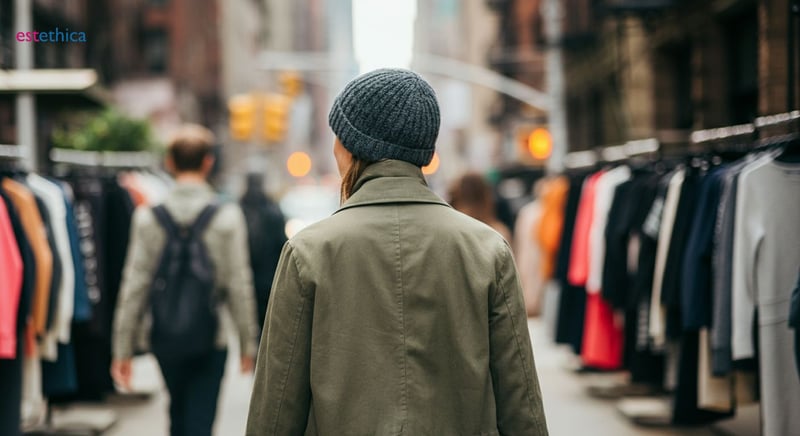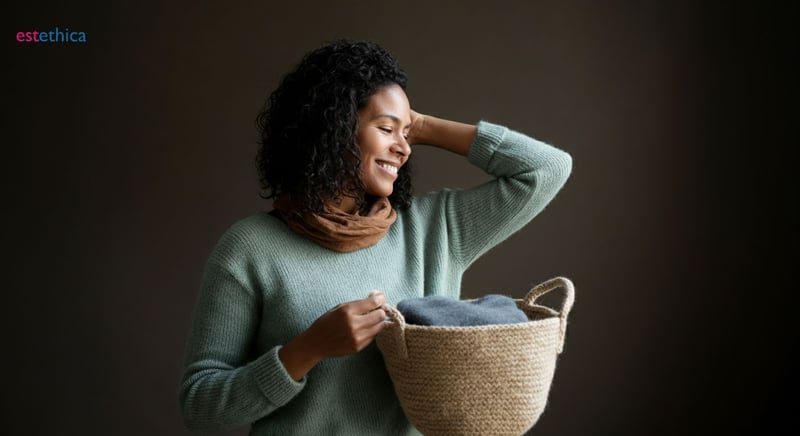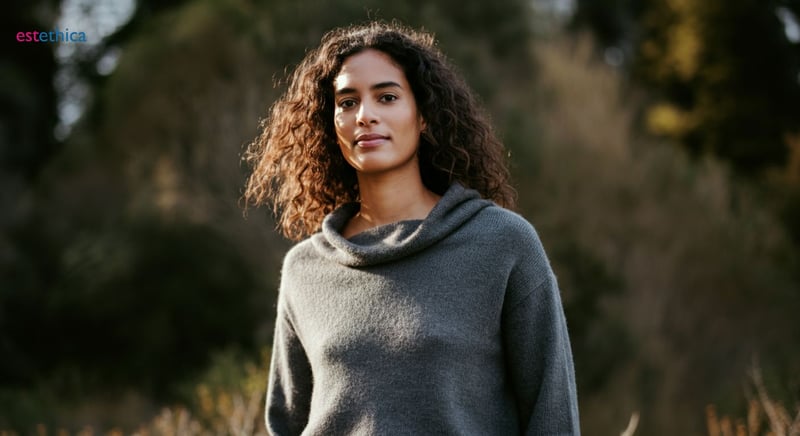estethica: Your Guide to Sustainable Fashion Choices
Dive into estethica's journey in leading sustainable fashion with eco-friendly innovations.
In recent years, sustainable fashion has transformed from a fringe movement to a vital part of the global fashion industry. This shift reflects the increasing consumer demand for ethical and eco-friendly clothing options. estethica, with its commitment to forward-thinking and principled healthcare, parallels the sustainable fashion ethos, promoting ethical practices without compromising on quality or the aesthetics of beauty. This article delves into sustainable fashion's core principles and why it's crucial for a brighter future.
Understanding Sustainable Fashion: A Beginner's Guide
The Aesthetics of Sustainable Fashion
Sustainable fashion is not just about ethics; it's also about aesthetics. The aesthetics of beauty in sustainable fashion focus on creating visually appealing designs that are also environmentally friendly. For instance, brands like Stella McCartney and Patagonia have mastered the art of combining style with sustainability. They use eco-friendly materials like organic cotton and recycled polyester, which not only look good but also reduce environmental impact.
Key Features of Sustainable Fashion
- Eco-friendly materials: Brands use materials like Tencel and hemp, which are biodegradable and require less water.
- Fair labor practices: Companies ensure workers are paid fairly and work in safe conditions, enhancing the aesthetics of beauty in the industry.
- Waste reduction: Techniques like upcycling and zero-waste patterns minimize fabric waste, contributing to a greener planet.
These features not only make sustainable fashion appealing but also align with the growing consumer demand for ethical clothing options.
How to Choose Sustainable Fashion
- Research brands: Look for companies committed to sustainability, like Eileen Fisher, known for their eco-friendly clothing lines.
- Check materials: Opt for garments made from sustainable materials such as bamboo or organic linen.
- Evaluate certifications: Seek out certifications like Fair Trade or GOTS, which ensure ethical and sustainable practices.
By following these steps, consumers can make informed choices that support sustainable fashion, contributing to a more ethical and aesthetically pleasing industry.

Choosing Eco-Friendly Clothing: What You Need to Know
The Aesthetics of Eco-Friendly Clothing
Eco-friendly clothing embodies the aesthetics of beauty by harmonizing style with sustainability. This approach ensures that garments are not only visually appealing but also environmentally responsible. For example, brands like Reformation and Everlane prioritize eco-friendly materials and ethical production methods, enhancing the aesthetics in nursing by caring for the planet. These brands use organic cotton and non-toxic dyes, which are gentle on the environment and the skin.
Key Considerations for Eco-Friendly Clothing
- Material sourcing: Choose garments made from organic or recycled materials to reduce environmental impact.
- Production practices: Support brands that minimize carbon footprints through sustainable manufacturing processes.
- Longevity: Opt for durable clothing that withstands wear and tear, reducing the need for frequent replacements.
These considerations not only contribute to a sustainable wardrobe but also align with the growing trend of green fashion, where aesthetics and ethics coexist.
Steps to Identify Ethical Fashion Brands
- Research brand values: Look for transparency in sourcing and production practices.
- Check for certifications: Certifications like B Corp or OEKO-TEX indicate commitment to ethical standards.
- Read reviews: Consumer feedback can provide insights into a brand's ethical practices and product quality.
By following these steps, consumers can support ethical fashion brands that prioritize the aesthetics of beauty and sustainability, ensuring a positive impact on both the environment and society.

Spotlight on Ethical Fashion Brands: Making Informed Choices
Understanding the Impact of Ethical Fashion Brands
Ethical fashion brands are reshaping the industry by setting new standards for sustainability and transparency. These brands prioritize ethical clothing production, ensuring fair labor practices and sustainable sourcing. For example, People Tree, known for its commitment to fair trade, uses organic cotton and supports artisans worldwide. Similarly, Pact Apparel focuses on using organic materials and maintaining ethical production processes, enhancing the aesthetics of beauty in fashion.
Key Characteristics of Ethical Fashion Brands
- Transparency: Brands like Everlane provide detailed information about their supply chain, promoting consumer trust.
- Sustainable materials: Companies such as Thought Clothing use eco-friendly materials like hemp and bamboo.
- Community support: Brands like Nisolo invest in local communities, ensuring fair wages and safe working conditions.
These characteristics not only define ethical fashion brands but also align with the growing consumer demand for sustainable apparel.
Steps to Make Informed Choices in Ethical Fashion
- Identify brand values: Research brands that align with your ethical and aesthetic values.
- Evaluate material choices: Opt for brands using sustainable and eco-friendly clothing materials.
- Support transparency: Choose brands that openly share their production practices and labor conditions.
By following these steps, consumers can support ethical fashion brands that prioritize sustainability and transparency, contributing to a more responsible fashion industry.

Exploring Circular Fashion: A Path to Sustainability
The Aesthetics of Circular Fashion
Circular fashion is redefining the aesthetics of beauty by integrating sustainability into every stage of garment production. This approach ensures that clothing is not only stylish but also environmentally responsible. Brands like Mud Jeans and Eileen Fisher are pioneers in this field, using innovative recycling techniques to create new garments from old ones. This not only reduces waste but also enhances the aesthetics in nursing by promoting a healthier planet. By focusing on the lifecycle of clothing, circular fashion aligns with the principles of sustainable fashion, offering a fresh perspective on eco-friendly clothing.
Key Principles of Circular Fashion
- Design for longevity: Garments are created to last, reducing the need for frequent replacements.
- Recycling and upcycling: Old clothes are transformed into new products, minimizing waste.
- Biodegradable materials: Use of natural fibers that decompose naturally, reducing environmental impact.
These principles not only contribute to a sustainable fashion industry but also align with the growing consumer demand for ethical clothing options.
Steps to Embrace Circular Fashion
- Choose brands committed to circular practices, like Patagonia, known for its recycling initiatives.
- Opt for garments made from recycled or biodegradable materials, such as organic cotton or Tencel.
- Support companies that offer take-back programs, allowing you to return old clothes for recycling.
By following these steps, consumers can actively participate in the circular fashion movement, contributing to a more sustainable and aesthetically pleasing industry.
Innovative Techniques in Sustainable Fashion
Excellence in Circular Fashion for a Sustainable Future
Frequently Asked Questions
What is sustainable fashion and why is it important?
How can I choose eco-friendly clothing?
What are ethical fashion brands and how do they differ from regular brands?
What is circular fashion and how does it contribute to sustainability?
Why should I support sustainable fashion stores in New York or eco-friendly clothing shops in London?
Discover the Path to Your Healthiest Self with estethica's Award-Winning Services!
📞 Call Now for a Free Consultation!